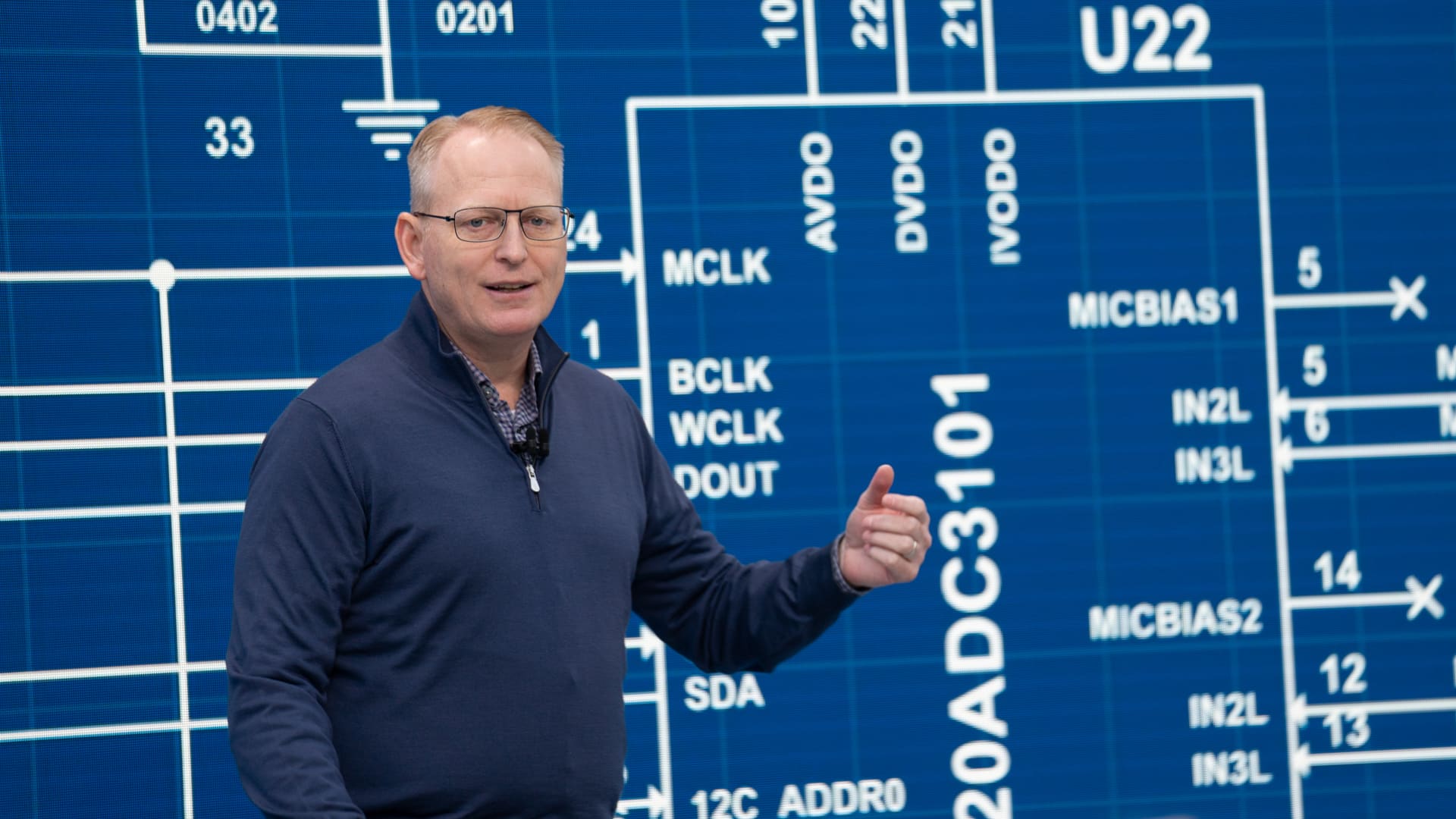Since Amazon unveiled its Alexa voice assistant in 2014, the company has worked to embed the technology in as many devices as it can, from microwaves and thermostats to ear buds and wall plugs.
Now Amazon is making TVs a bigger focus of its push to put Alexa everywhere, as it looks to cement its presence in the smart home market. At a hardware event in 2021, the company unveiled its first TV sets, which users can control by voice with Alexa. Amazon followed that launch up on Wednesday, adding three new sizes of its QLED TVs and a cheaper model to its lineup of Fire TVs.
related investing news
Dave Limp, Amazon’s hardware chief, told CNBC in an interview that smart TVs are the fastest-growing part of the company’s Fire TV business, which also includes streaming sticks and the Fire TV Cube, a streaming box with Alexa. Amazon said Wednesday it has sold more than 200 million Fire TV devices globally, up from 150 million last January.
But as Amazon puts more emphasis on the TV, the company risks the possibility that consumers will shelve their Echo smart speakers, which were introduced in 2014 and soon became a home sensation. That’s not just a hypothetical. Limp ditched his living room speaker.
“I don’t have an Echo in there anymore, I just use my TV,” Limp said. “So it does serve double duty, it’s just its primary responsibility is first and foremost to be a great television.”
Limp, as you’d expect, rejects the idea that an Alexa-powered Fire TV will cannibalize the company’s Echo devices. Entertainment is still the primary purpose of the TV, and the numerous form factors of the Echo can be used in any room in the house.
For Amazon to make a dent in the hypercompetitive smart TV market, the company needs a selling point that goes beyond TV shows, movies and offering all the streaming services available. Amazon sees an opportunity to transform the TV into what’s essentially an extra-large smart display that’s always on.
The company calls it the Fire TV Ambient Experience. Other companies are doing that, too. For example, Samsung and LG have TVs that display high-quality art or photographs when they’re not in use.
“As you’re going around your house and you have all these dark panels, typically they’re off and they’re big black holes on the wall in your house,” Limp said. “So how can we make better use of them?”
Amazon is doubling down on TVs at a time when CEO Andy Jassy has moved aggressively to cut costs, resulting in the largest layoffs in company history, a corporate hiring freeze and several canceled projects.
A portion of the layoffs, which are expected to total 27,000 employees, landed in Limp’s organization, which oversees the development of products such as Alexa, Echo smart speakers and Kindle e-readers. Just under 2,000 people in Limp’s division were let go as part of the job cuts, he previously told CNBC.
Layoffs in the Alexa division were primarily in and around health-related services and newer projects that were “even higher beta,” Limp said.
“We’re still super committed to the Fire TV and Alexa businesses, and you can see it with the products,” Limp said, referring to Wednesday’s announcement.
Since its launch in 2014, Amazon has made big investments in Alexa and assigned top talent to grow the technology, largely at the direction of founder Jeff Bezos, who saw voice as key to how people would interact with computers in the future. Amazon has about 10,000 people working on Alexa-related projects.
But Bezos’ vision isn’t universally accepted. Bloomberg reported that Amazon executives have expressed concern about fading Alexa user engagement. Some worry that Echo speakers are headed in the direction of other once-trendy consumer devices that eventually lost their value. Rather than being used for shopping lists, ordering groceries and setting schedules, what if Echo owners limit their use to basic functions like alarm clocks, timers and weather updates?
Still, Limp said engagement with Alexa devices continues to increase.
“People do use it for an alarm clock, don’t get me wrong, but they use it for so many broad things,” Limp said. “It’s unbelievable when you look at the utility of what Alexa brings into the home. I think Fire TV just enhances that.”
WATCH: Amazon TV is next step for company to move into internet of things


